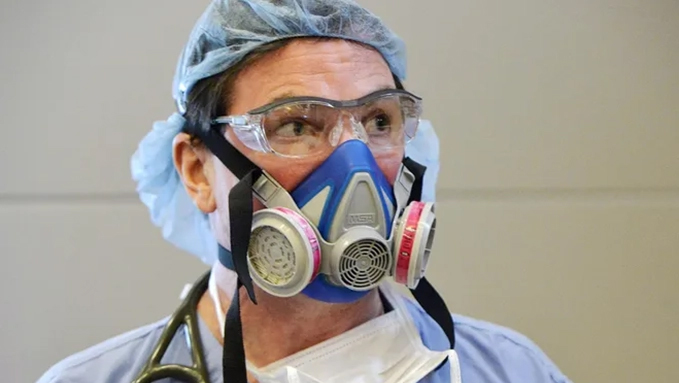
At the beginning of the COVID-19 epidemic, there was a significant scarcity of disposable N95 respirators, which required healthcare staff to adopt unusual steps to increase their supply. On the other hand, there are respiratory protection products that are designed to be reused and have filter effectiveness equivalent to, if not higher than, disposable N95 respirators.
The Centers for Disease Control and Prevention (CDC) authorized using reusable elastomeric respirators in healthcare settings to guard against COVID-19. As opposed to hundreds or even thousands of disposable N95 masks, a single elastomeric mask may serve the same purpose. Because they can be cleaned and reused, they take up little storage space, are cost-effective, and meet a critical requirement for disaster preparedness.
What Are Reusable Elastomeric Respirators?
Reusable elastomeric respirators are respirators that are meant to fit tightly and provide protection that is greater than the N95 norm. These respirators are also intended to be safely reused over many years. These types of reusable rubber half masks are not new; they have long been an important component of personal protection equipment (PPE) for a wide range of workers in a variety of industries. These reusable respirators outperform any disposable mask now on the market in terms of reliability, comfort, cost-effectiveness, and safety level.
Many organizations commonly manufacture elastomeric respirators using N95, N99, or P100 level filters in their production process. They are the most common type of reusable respirators available because they provide a higher level of protection than disposable N95 respirators and are more affordable.
Design and Function
Initially, designers created reusable elastomeric respirators, primarily for young men of average weight in the workforce. To cater to this demographic, designers created these respirators in a variety of conventional sizes. Recent anthropometric studies have continued to affect the design and fit of the face piece, allowing it to suit a wider range of criteria, such as ethnicity, gender, and weight. The proportion of workers who can successfully pass a fit test has increased because of these innovative designs for the shape and sealing surface against the face.
Some employees may experience discomfort because of physiological reactions, such as a perceived increase in temperature under the face piece or skin irritation, or psychological ones, such as anxiety or claustrophobia. However, most workers can successfully use a reusable elastomeric respirator.
Usage of Reusable Elastomeric Respirators in Workplaces Other Than Healthcare
When alternative treatments fail to reduce airborne contaminants to levels below occupational exposure limits, respiratory protection is necessary. Reusable elastomeric respirators, such as self-contained breathing apparatus or a respirator, offer less protection than air-supplied respirators. Despite this, workers in a wide number of industries prefer to use reusable elastomeric respirators rather than other types of personal protective equipment (PPE). This is because of the respirators’ remarkably simple and lightweight design, ability to be placed on and removed quickly and without help, and comparably low maintenance requirements.
Fit Testing
Elastomeric respirators, like all other types of tight-fitting respirators, are required to undergo fit testing.
It is vital to do fit testing to determine the specific mask (brand, model, and size) that the employee will inevitably wear at all times.
Procedures that are either qualitative or quantitative and do not involve any destruction can conduct fit testing for elastomeric respirators. One of the test’s most notable benefits is that it does not harm the respirator, which is the outcome of the fitness testing technique.
Final Thoughts
The general public’s health and safety are unquestionably the most critical issues. On the other hand, it is critical that we, as a society, recognize the more general waste problem that this pandemic has created. For this reason, many corporations have implemented efforts in facilities throughout the United States and Europe to increase the production of reusable elastomeric and air-purifying respirators.
Researchers have shown that elastomeric respirators are reusable, inexpensive, and might help with the COVID-19 pandemic’s N95 respirator shortage problem. Researchers demonstrated this in a real-world hospital experiment.
According to the Centers for Disease Control and Prevention, they also offer equivalent, if not greater, protection against airborne pathogenic agents than N95 respirators. Elastomeric respirators use a replaceable filter.
Increased use of these respirators may have a chance to reduce environmental damage by lowering the quantity of garbage created. It is also conceivable for them to supplement the disposable mask stockpiles held at healthcare facilities. This strategy will safeguard those on the front lines and first responders from any potential mask shortages, promoting long-term cost savings while also providing important protection.